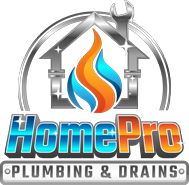▷Step by Step Guide to Installing a Water Pressure Regulator In San Diego
Step by Step Guide to Installing a Water Pressure Regulator In San Diego
Did you know that up to 85% of homes in the US have water pressure that is too high? Protect your pipes and appliances by installing a water pressure regulator. Follow these five expert tips to get it done right the first time. From tools needed to step-by-step instructions, we’ve got you covered. Save money on repairs and extend the lifespan of your plumbing system with these simple yet crucial steps.
Why Install a Water Pressure Regulator
Equipment Lifespan
Water pressure regulators help extend the lifespan of your plumbing fixtures and appliances such as washing machines and dishwashers. By maintaining a consistent water pressure, these devices prevent wear and tear caused by sudden pressure spikes.
Installing a water pressure regulator can prevent leaks in your pipes, reducing the risk of costly water damage to your home. It ensures that your plumbing system operates within safe pressure limits, preserving its longevity.
Safety Measures
Maintaining a stable water pressure with a regulator is crucial for ensuring the safety of your household. Fluctuating pressures can lead to burst pipes or even explosions in extreme cases, posing serious risks to both property and personal safety.
A water pressure regulator acts as a safeguard against high-pressure surges that could damage your plumbing system. It helps prevent accidents related to excessive pressure, promoting a secure environment for you and your family.
Energy Efficiency
Regulating water pressure not only protects your plumbing but also contributes to energy efficiency. Consistent pressure reduces the strain on water heaters and other appliances, leading to lower energy consumption and decreased utility bills.
By installing a water pressure regulator, you can optimize the performance of your appliances while minimizing energy wastage. This eco-friendly approach benefits both your wallet and the environment.
Water Quality
Maintaining proper water pressure through regulation also plays a vital role in ensuring good water quality. Excessive pressures can stir up sediment in pipes, affecting the clarity and purity of your drinking water.
A regulator helps keep the flow steady, preventing any disturbances that could compromise the quality of the water coming into your home. This simple device promotes cleaner, healthier water for various household uses.
Preparing for Installation
Gather Tools
To begin the installation process, gather essential tools such as a pipe cutter, wrench, Teflon tape, and a pressure gauge. Having these tools ready ensures a smooth installation.
Other necessary tools include plumber’s tape, adjustable wrenches, and a bucket to catch any excess water during the process.
Prep Your Home
Before installing the water pressure regulator, ensure that the main water supply to your home is turned off. This step prevents any unexpected leaks or water damage during the installation.
Inspect the area where you plan to install the regulator. Ensure there is enough space for easy access and that the area is clean and free of debris that could interfere with the installation process.
Water Shut-off
Locate your home’s main water shut-off valve. Turn it off to stop the flow of water into your home before beginning the installation of the water pressure regulator.
Remember to drain any remaining water in the pipes by opening a faucet after shutting off the main water supply. This step helps prevent any excess water from leaking out during installation.
Installation Steps
Measure and Cut
To begin, measure the pipe where you plan to install the water pressure regulator accurately. Use a pipe cutter to cut the pipe precisely at the marked point.
Next, ensure that the ends of the pipe are clean and free from any debris before proceeding with the installation process.
Apply Tape
Before installing the water pressure regulator, it is crucial to apply thread seal tape to the threads on both ends of the regulator. This tape helps create a tight seal and prevents any potential leaks in the system.
Make sure to wrap the tape around the threads in a clockwise direction for proper application. This step is essential for ensuring a secure connection between the pipes and the regulator.
Install Regulator
Now, carefully insert the water pressure regulator between the two cut sections of the pipe. Ensure that it fits snugly in place before proceeding with tightening the connections.
Use adjustable wrenches to secure both ends of the regulator onto the pipes firmly. Make sure not to overtighten to avoid damaging the fittings or causing leaks.
Attach Gauge
Lastly, attach a pressure gauge to one of the ports on the water pressure regulator. This gauge will allow you to monitor and adjust the water pressure as needed once the installation is complete.
Once all these steps are completed, you can proceed to test the system by turning on the water supply and checking for any leaks or irregularities in water pressure.
Restoring Water Supply
Check Connections
Inspect all connections for leaks or loose fittings before proceeding with the water pressure regulator installation.
Make sure that the pipes are properly aligned and securely fastened to prevent any potential water leakage issues.
Check the seals on all connections to ensure they are intact and in good condition to avoid future problems.
Turn On Water
Once you have completed installing the water pressure regulator, slowly turn on the main water supply valve.
Monitor the system closely for any leaks or irregularities in water flow after turning on the water supply.
Gradually increase the water pressure to the desired level while checking for any signs of leakage or malfunctions.
FAQs
How Can A Water Pressure Regulator Benefit My Home?
A water pressure regulator helps prevent damage to pipes and appliances by maintaining optimal water pressure levels. It ensures consistent flow, extends the lifespan of fixtures, and reduces water wastage, saving you money on repairs and utility bills.
What Tools Are Needed For Installing A Water Pressure Regulator?
You will typically need adjustable wrenches, Teflon tape, pipe cutter or hacksaw, pliers, and a pressure gauge. These tools will help you efficiently install the regulator and ensure proper functioning to maintain your home’s water pressure at an ideal level.
Is It Necessary To Prepare Before Installing A Water Pressure Regulator?
Yes, preparation is crucial. Turn off the main water supply, drain excess water from the pipes, and gather all necessary tools before starting the installation process. Proper preparation ensures a smooth installation experience and helps prevent any potential issues during the process.
How Many Steps Are Involved In Installing A Water Pressure Regulator?
The installation process generally involves several key steps such as selecting the right location for the regulator, cutting into the main water line, attaching fittings securely, adjusting the pressure setting, and testing for leaks. Following each step carefully ensures an effective installation that maintains optimal water pressure.
What Should I Do If There Are Issues With Restoring Water Supply After Installation?
If you encounter difficulties in restoring water supply post-installation, double-check all connections for leaks or loose fittings. Ensure that the shut-off valve is fully open and that the regulator is correctly adjusted. If problems persist, consult a professional plumber for further assistance in resolving the issue promptly.
Conclusion
Now that you have learned the importance of installing a water pressure regulator, how to prepare for the installation, the steps involved, and how to restore the water supply afterward, you are well on your way to ensuring a steady and safe water flow in your home. By taking these proactive measures, you can prevent potential damage to your plumbing system and appliances caused by high water pressure.
Don’t wait until you encounter issues due to high water pressure. Take action now by following the tips provided in this guide to install a water pressure regulator. Your efforts will not only safeguard your home but also save you from costly repairs in the future. Make sure to prioritize the maintenance of your plumbing system for a stress-free and efficient water supply experience.
Give Home Pro Plumbing a call right away to learn more about how our experts can help with leak detection in San Diego, CA.
Our Plumbing & Leak Detection Services
Related Posts

▷5 Benefits of Hydro Jet Plumbing: A Comprehensive Guide In San Diego
5 Benefits of Hydro Jet Plumbing: A Comprehensive Guide In San Diego Hydrojet plumbing is a…

▷Essential Tips for Installing a Heat Pump Water Heater In San Diego
Essential Tips for Installing a Heat Pump Water Heater In San Diego Did you know…

